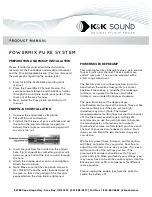
When testing ultra-thin materials, sometimes ‘’double refraction’’ happens,
which is a kind of incorrect result and the result is twice of the real one.
Another incorrect result called ‘’pulse envelope, cycle jump’’, which means
that the testing result is higher than the real one. In order to prevent this kind
of error, when testing the object with the appropriate thickness as the
minimum limit and judgment is available, customer should pay attention to the
waveform displayed and adjust the gain or use blank function.
3. SURFACE CLEANING INFLUENCE
Before measuring, all the dust, dirt and corrosion should be cleaned and the
cover like paint should be removed.
4. ROUGHNESS INFLUENCE
The extremely rough surface may arouse measuring error or even no reading,
therefore, the surface of the material should be smooth before measuring
through polishing, filing, grinding or using high-viscosity couplant.
5. SURFACE OF THE ROUGH MACHINE PROCESSING
The regular slugs after rough machine processing (such as lathing or planning)
on the surface of the work-piece may also arouse measuring errors. Except for
the compensation methods mentioned above in 4, adjusting the angle between
and sound insulating wall (the metal film through the center of the probe
bottom) of the probe and the slugs of the material and making them
perpendicular or parallel with each other to get the minimum reading as the
thickness value is also efficient.
5.2 Measuring Methods
1. SINGLE-POINT MEASUREMENT
Using the probe to measure a random point on the surface of the object, the
reading displayed is the thickness value.
2. DOUBLE-POINT MEASUREMENT
Measuring twice at the same spot on the object, and making the probe inclines
90
°
in the second measurement, the thinner reading is the thickness value.
3. MULTIPLE-POINT MEASUREMENT
When the reading is unstable, measuring several times within a circle with a
certain point as center and 30mm as diameter, the thinnest reading is the
thickness value.
4. CONTINUOUS MEASUREMENT
Taking continuous measurements along a specified path at intervals of 5mm or
less according to the single measurement method, the thinnest reading is the
thickness value.
5.3 Pipe Wall Measurement
During the measurement, the probe split surface can be measured along the
axis of the pipe or the axis of the vertical pipe. At this time, the reading on the
screen will have regular changes, and the minimum value in the reading will
be selected as the accurate thickness of the material. If the pipe diameter is
large, it should be measured in the direction of the vertical axis. If the pipe
diameter is small, two measurement methods along the axis direction and the
vertical axis direction are selected, and the minimum value in the reading is
taken as the thickness value of the workpiece.
5.4 Cast Measurement
It’s difficult to measure cast work-piece because there are some special
features of the cast measurement: the rough grain of cast material, the loose
structure, and the rough surface measuring status. So there are some tips to
follow:
23
24

































